Table of Contents
In this article, we’re discussing fanless laptops and silent Windows ultrabooks and Chromebooks, or in other words, laptops with passive cooling solutions, without a fan that spins and makes noise.
You’ll find quite a few different laptops without a fan available in stores, and we’ll list them all based on screen size, weight, the hardware inside, and their pricing. We’ll also cover what we consider to be the best fanless designs available at the time of this update, and explain why we made those choices based on our reviews and experience.
Now, there’s one obvious reason why you’ll want a fanless laptop: it’s going to be noiseless and completely silent, especially as the passively cooled hardware is also paired with quiet SSD storage in most units. Older fanless machines, especially among the more affordable options, used to come with spinning HDDs, but even those could be upgraded in order to deliver what the fanless consumers desire: a quiet laptop experience, similar to what you’re getting with tablets or phones.
But there are a few other reasons, such as the fact that fanless designs are normally thin and lightweight as well, thus excellent for traveling and lugging around every day to work or school, plus the fact that without any moving parts inside, you won’t have to concern yourselves with vibrations or anything that can negatively impact your daily-use experience with the device.
At the same time, it’s important to understand that the majority of fanless laptops available these days are built on lower-power hardware platforms compared to the actively-cooled designs. So while the modern options can handle everyday tasks just fine, these fanless computers are not meant for serious multitasking or the more demanding chores you might want to perform on a modern laptop (editing videos and photos, gaming, running programming software, etc.). But there are some exceptions to the rule, with the newer hardware platforms, as you’ll see in a bit.
On top of that, you’ll also have to be aware of the two major classes of fanless laptops available in stores: premium designs, such as MacBook Airs or the Surface Pro X or the Lenovo ThinkPad X1 Fold, and affordable options available in various sizes, from mini-laptops such as the Asus Vivobook Go L210 up to 15 and 17-inch all-around models from Asus, Dell or HP. We’ll discuss them all further down.
We’ll also talk a bit more about the fanless hardware platforms available at this very moment, towards the end of the post, so you’ll understand exactly what to expect from each of them. In a few words though, if you’re reading this article in 2025 or later, Intel Celeron/Pentium specs are the ones to get if you’re shopping on a budget, with some premium fanless Intel Core models and especially a handful of newer ARM-based implementations in the higher-tier products, either Chromebooks or fully fledged laptops running macOS or Windows.
For now, these are the available fanless laptops and ultra-portables. Click the links on each product’s name for more details and reviews, as well as the links in the Price column for the latest offers and discounts on the ones that you’re interested in.
Going with a fanless laptop normally translates into a compromise in performance and/or thermals. These options here are, however, pretty much the best money can get you in a fanless and completely silent product.
They’re very different between the various models, and I’d suggest further research to understand which is the right choice for you. You’ll find a couple of older Core devices running either Windows or ChromeOS, a couple of premium ARM-based devices running the ARM-version of Windows and compatible apps, you’ll find the excellent MacBook Air M1 and M2 running MacOS, as well as a few Windows laptops built on powerful Intel Core U hardware, such as the Huawei Matebook X and the ThinkPad X1 Fold.
If you’re willing to spend around 500 USD/EUR or your local equivalent on this sort of premium fanless laptop, the balanced and long-lasting Apple MacBook Air M1 built on Apple silicon is still one of the go-to options in this segment, as more affordable than the newer Air 13-inch M2/M3/M4, and more powerful than the very few available Windows options with similar capabilities, such as the portable Huawei MateBook X. You might have a harder time finding it in stores, though, but you can still find it used or refurbished.
The more recent MacBook Air M4 series is another excellent option at 1000+ with the latest hardware updates and 16 GB of RAM for the base-level configurations, just make sure a Mac is the right choice for you (coming from a Windows machine, you’ll need time to adapt to the OS and how things generally work on Macs).
Then you get a couple of fanless Windows devices built on Qualcomm Snapdragon hardware, of various iterations. The Microsoft Surface Pro 12 is perhaps the most interesting such option as of 2025, the popular Surface tablet format with a beautiful display, good ergonomics and premium construction, starting at just under $1000 (for the tablet alone, as the keyboard folio and the pen are extras). Make sure you understand the peculiarities and potential software incompatibilities of the Windows for ARM variant that runs on these Snapdragon models.
Careful, though, there are both Intel and Snapdragon versions of the Surface Pro 12. The Intel variants are not passively cooled and have a fan inside, while only the Snapdragon variants are fanless.
So when it comes to x86 laptops running the full kind of Windows, options are limited, especially options for any modern device. You might still find the Dell XPS 13 2-in-1 or the Microsoft Surface Pro 7/7+, even if these are rather old these days. These Surface tablets are fanless in their Core i3/i5 configurations. Those are older generation Intel platforms, but they should still do fine for everyday use and daily multitasking.
This aside, on the more budget-friendly side, Chuwi made a few interesting laptops without fans, built on low-power platforms and with small batteries, but otherwise with beautiful screens and premium designs.
| Model | Type, Last Refresh | Screen | Hardware | Weight | Price |
| Acer Swift 7 | Windows, clamshell 2016 |
14.0″ IPS FHD touch | Amber Lake Core Y, 32 Wh | .9 kg / 2 lbs | $1599 |
| Apple MacBook Air M1 | MacOS, clamshell 2020 |
13.3″ IPS retina glossy | Apple M1, 49.9 Wh | 1.29 kg / 2.7 lbs | $699 |
| Apple MacBook Air 13 | MacOS, clamshell 2022 – M2 variant 2023 – M2 variant 2024 – M4 variant |
13.6″ IPS retina | Apple M2 to M4, 52.6 Wh | 1.24 kg / 2.7 lbs | $999 |
| Apple MacBook Air 15 | MacOS, clamshell 2022 – M2 variant 2023 – M3 variant 2024 – M4 variant |
15.3″ IPS retina | Apple M2 to M4, 66.5 Wh | 1.5 kg / 3.3 lbs | $1199 |
| Asus Chromebook Flip C434 | Chromebook, convertible 2019 |
14″ IPS FHD touch | Amber Lake Core Y, 48 Wh | 1.45 kg / 3.2 lbs | $479 |
| Chuwi HeroBook Pro | Windows, clamshell 2022 |
14.1″ IPS 2K | Intel Gemini Lake R N4020, 33Wh | 1.3 kg / 2.8 lbs | $199 |
| Dell XPS 13 2-in-1 | Windows, tablet + folio 2022 |
13″ 3.2K IPS touch | Alder Lake Core U, 49.5 Wh | .76 kg / 1.6 lbs, plus keyboard |
$999 |
| Google Pixelbook | Chromebook, convertible 2017 |
12.3″ IPS 3:2 3K touch | Amber Lake Core Y, 48 Wh | 1.13 kg / 2.5 lbs | $799 |
| Google Pixelbook Go | Chromebook, clamshell 2019 |
13.3″ IPS 16:10 FHD touch | Amber Lake Core Y, 48 Wh | 1.1 kg / 2.4 lbs | $649 |
| Huawei MateBook X | Windows, clamshell 2021 |
13″ IPS 3:2 3K touch | Comet Lake Core U, 42 Wh | 2.2 lbs / 1 kg | $999 |
| Lenovo ThinkPad X13s | Windows on ARM, clamshell 2022 |
13.3″ 16:10 IPS matte | Qualcomm Snapdragon 8cx, 49 Wh | 1.06 kg / 2.35 lbs | $1099 |
| Lenovo ThinkPad X1 Fold | foldable laptop 2022 |
16″ OLD 2K+ touch | Intel Core U, 48+16 Wh | 3.8 lbs / 1.8 kg | $2499 |
| Microsoft Surface Pro 7, 7+ | tablet + folio 2019 |
12.3″ IPS 2.7K touch | Intel Core i3 or i5 – 11th gen, 47.4 Wh | 0.77 kg / 1.7 lbs (without keyboard) |
$799 |
| Microsoft Surface Pro X | Windows on ARM, tablet 2021 |
13″ IPS 3:2 3K touch | Qualcomm Snapdragon SQ1 or SQ2, 34 Wh | .78 kg / 1.7 lbs | $899 |
| Microsoft Surface Pro 12 | Windows 11 ARM, tablet 2025 |
12″ IPS 3:2 2K touch | Qualcomm Snapdragon X Plus, 38 Wh |
.69 kg/ 1.5 lbs | $949 |
| Venom BlackBook Zero 14 | Windows, clamshell 2020 |
14″ IPS FHD matte | Intel Amber Lake Y, 40 Wh | 3.1 lbs / 1.4 kg | $1099 |
Full-size fanless laptops
This section is reserved for full-size everyday machines with 14+ inch screens. Most of these are Chromebooks, and I’ve only listed the most interesting picks here, as we do cover Chromebooks in general in a separate detailed article.
There aren’t many full-size fanless Windows laptop options, though, simply because you’d normally expect more competent hardware in a larger laptop, the kind that requires a fan. The ThinkPad X1 Fold stands out as the exception, though, as a fanless multi-purpose computer with a foldable OLED display (too bad this was never actually available to buy).
There are were however some inexpensive models from Asus, Dell or HP to consider, with screens going from 14 to 17 inches in size. The Asus VivoBook Go Flip (14-inch, convertible) and Asus E510 Ultra Thin (15-inch, clamshell), the Acer Swift 1 (14-inch, clamshell), or the HP Laptop 17 (17-inch, clamshell) were interesting Windows options in this niche in the past, as long as you didn’t expect much in terms of power from them.
Update: There’s hardly any recent fanless Windows device available anymore, except for some of those older units that you might still find here and there. But even those are hardly available new.
| Model | Type, Last Refresh | Screen | Hardware | Weight | Price |
| Acer Swift 1 SF114-34 | Chromebook, clamshell 2021 |
14.0″ LED FHD | Pentium Jasper lake, 546 Wh | 1.3 kg / 2.8 lbs | $399 |
| Asus Chromebook CX3 | Chromebook, clamshell 2022 |
14.0″ IPS FHD | Amber Lake Core Y, 56 Wh | 1.3 kg / 2.8 lbs | $349 |
| Asus VivoBook Go Flip 14 | Windows, convertible 2022 |
14″ IPS FHD touch | Jasper Lake Celeron, 39 Wh | 1.45 kg / 3.2 lbs | $349 |
| Asus VivoBook Go 14 L410 | Windows, clamshell 2022 |
14″ LED FHD | Gemini Lake Celeron, 42 Wh | 1.3 kg / 2.9 lbs | $279 |
| Asus VivoBook Go 15 L510 | Windows, clamshell 2022 |
15.6″ LED FHD | Gemini Lake Celeron, 42 Wh | 1.63 kg / 3.6 lbs | $299 |
| Asus E510 Ultra Thin | Windows, clamshell 2022 |
15.6″ LED FHD | Gemini Lake R Celeron, 42 Wh | 1.63 kg / 3.6 lbs | $299 |
| Chuwi HeroBook Plus | Windows, clamshell 2021 |
15.6″ IPS 2K | Intel Gemini Lake R N4020, 38Wh | 1.6 kg / 3.5 lbs | $199 |
| HP ProBook Fortis 14 | Windows, clamshell 2023 |
14.0″ IPS FHD matte | Intel 12th-gen Core U, 42 Wh | 1.7 kg / 3.75 lbs | $849 |
| Lenovo ThinkPad X1 Fold | foldable laptop 2022 |
16″ OLED 2K+ touch | Intel Core U, 48+16 Wh | 3.8 lbs / 1.8 kg | $2499 |
| Samsung Chromebook 4+ | Chromebook, clamshell 2020 |
15.6″ LED FHD | Gemini Lake Pentium, 39 Wh | 1.8 kg / 3.8 lbs | $399 |
I’d also recommend checking out our detailed guide on the best 14 and 15-inch portable laptops you can find right now, as a follow-up in your quest for this sort of full-size multipurpose laptop.
Fanless ultrabooks and Windows ultra-portables
This section is reserved for the portables ultrabooks and thin-and-light laptops with screen sizes between 12 and sub-14-inches.
That includes the popular 12 and 13.3-inch categories, where you’ll mostly find the best-balanced mix of ergonomics and build quality, with a comfortable keyboard, a fair selection of ports, capable hardware and a fair-sized battery.
Here’s where you’ll also find most of the premium fanless offers already mentioned earlier in the article, such as the Apple MacBook Air or the Huawei MateBook X, or the Microsoft Surface Pro X, but also some excellent mid-sized ChromeBooks, such as the Google Pixelbook Go or the Lenovo Chromebook Flex 13.
| Model | Type | Screen | Hardware | Weight | Start Price |
| Acer Switch 7 Black Edition | detachable, 2016 | 13.5″ IPS touch | Kaby Lake-R Core U | 1.13 kg / 2.5 lbs | $1699 |
| Acer Aspire Switch 12S | detachable, 2016 | 12.5″ IPS touch FHD | Skylake Core M | 1.5 kg / 3.3 lbs (w/ dock) | $1199 |
| Apple MacBook 12 | MacOS, clamshell 2016 |
12.0″ IPS retina | Skylake Core M | 0.90 kg / 2.0 lbs | $1199 |
| Apple MacBook Air | MacOS, clamshell 2022-2025 |
13.3″ IPS retina glossy | Apple M1-M4, 49.9 Wh | 1.3 kg / 2.8 lbs | $899 |
| Asus Zenbook Flip UX360CA | convertible, 2016 | 13.3″ IPS touch FHD and QHD+ | Skylake Core Y | 1.3 kg / 2.86 lbs | $699 |
| ASUS BR1204 | Windows, clamshell 2023 |
12.2″ IPS FHD matte | Intel N-series, Twin Lake, 50 Wh | 1.35 kg / 3 lbs | $349 |
| Dell XPS 12 9250 | detachable, 2016 | 12.5″ IPS touch FHD or UHD | Skylake Core Y | 1.27 kg / 2.8 lbs (w/ dock) | $999 |
| Dell XPS 13 9365 | convertible, 2017 | 13.3″ IPS FHD/QHD+ touch | up to Amber Lake Core Y | 1.24 kg / 2.7 lbs | $999 |
| Dell XPS 13 9315 2-in-1 | Windows, tablet + folio 2022 |
13.3″ IPS FHD/QHD+ touch | Alder Lake Core U, 49.5 Wh | 1.3 kg / 2.85 lbs (w/ keyboard) | $999 |
| HP Elite Folio | Windows on Arm, tablet w/ folio 2018 |
13.5″ IPS FHD touch | Snapdragon 8cx, 46 Wh | 3.3 lbs / 1.5 kg | $1499 |
| HP Spectre Folio | Windows, tablet w/ folio 2018 |
13.3″ IPS FHD touch | Amber Lake Core Y, 55 Wh | 3.3 lbs / 1.5 kg | $1199 |
| Google Pixelbook Go | Chromebook, clamshell 2019 |
13.3″ IPS 16:10 FHD touch | Amber Lake Core Y, 48 Wh | 1.1 kg / 2.4 lbs | $649 |
| Huawei MateBook X | Windows on ARM, clamshell 2020 |
13″ IPS 3:2 3K touch | Comet Lake Core U, 42 Wh | 2.2 lbs / 1 kg | $999 |
| Lenovo ThinkPad X1 Tablet | tablet, 2016 | 12.0″ IPS touch | Kaby Lake Core Y | 0.77 kg / 1.7 lbs | $949 |
| Microsoft Surface Pro X | tablet + folio 2020 |
13″ IPS FHD+ touch | Qualcomm Snapdragon | 0.77 kg / 1.7 lbs (without keyboard) |
$999 |
| Microsoft Surface Pro 12 | tablet + folio 2025 |
12″ IPS 3:2 2K touch | Qualcomm Snapdragon X Plus, 38 Wh |
.69 kg/ 1.5 lbs | $949 |
| Thomson NEO Z3 | Windows on ARM, clamshell | 13″ IPS FHD | Qualcomm Snapdragon 850 | 1.1 kg / 2.4 lbs (w/ dock) | – |
| Toshiba Portégé Z20t | convertible, 2015 | 12.5″ IPS touch FHD | Broadwell Core M | 1.59 kg / 3.5 lbs (w/ dock) | $1299 |
| Xiaomi Book S 12.4 | tablet, 2020 | 12.4″ IPS touch | Snapdragon 8cx, 38 Wh | 1.05 kg / 2.3 lbs | ~650 EUR |
| Xiaomi Mi Notebook 12 | clamshell, 2020 | 12.5″ IPS FHD | Skylake Core U | 1.1 kg / 2.4 lbs | $899 |
Fanless Windows-running Mini laptops
Finally, we list here the smallest options, usually built on low-power hardware and primarily meant for basic daily tasks. Most of them are designed with either budget or long battery life in mind (and many check both these boxes).
The Microsoft Surface Go (Windows tablet) and the Lenovo Chromebook Duet (ChromeBook) are my primary recommendations in this class. The Duet sells for $300 and less and is excellent for casual use, while the Go is more expensive, but offers the full Windows experience in a tiny package. The Asus Laptop L210 is also an option to consider if you’re after a clamshell laptop format for under $250.
You’ll also find a wider selection of 10 and 11-inch mini-laptops and tablets in this separate dedicated article.
| Model | Type | Screen | Hardware | Weight | Start Price |
| Acer Aspire R 11 | convertible | 11.6″ TN touch HD | Celeron / Pentium Braswell | 1.58 kg / 3.50 lbs | $249 |
| Acer Chromebook Spin 311 | Chromebook, convertible | 11.6″ IPS HD | Mediatek, 40 Wh | 1.50 kg / 3.31 lbs | $199 |
| Asus VivoBook Go L210 | clamshell | 11.6″ TN HD | Gemini Lake Celeron, 38 Wh | 0.95 kg / 2.10 lbs | $209 |
| Asus EeeBook X205 | clamshell | 11.6″ TN HD | Atom BayTrail, 38 Wh | 0.95 kg / 2.10 lbs (w/ dock) | $199 |
| Asus Transformer Book T102HA | detachable | 10.1″ IPS HD | Atom CherryTrail | 0.79 kg / 1.74 lbs (w/ dock) | $349 |
| Dell Latitude 3120 Education | clamshell | 11.6″ TN HD matte | Jasper Lake Pentium, 40Wh | 1.4 kg / 3.1 lbs | $299 |
| HP Pavilion x360 11 | convertible | 11.6″ IPS HD touch | Gemini Lake Pentium, 37 Wh | 1.38 kg / 3.06 lbs | $299 |
| HP Stream 11 Pro | clamshell | 11.6″ TN HD | Gemini Lake Celeron, 38Wh | 1.05 kg / 2.3 lbs | $249 |
| Lenovo Chromebook Duet | Chromebook, tablet | 10″ IPS touch 16:10 | Mediatek, 27 Wh | 0.52 kg / 1.15 lbs (without keyboard) | $299 |
| Lenovo Chromebook Duet 5 | Chromebook, tablet | 10.9″ IPS touch 16:10 | Qualcomm Snapdragon 7c, 29Wh | 0.52 kg / 1.15 lbs (without keyboard) | $499 |
| Lenovo 10w | tablet | 10.1″ IPS touch FHD | Snapdragon 7c | 1.1 kg / 2.4lbs (with keyboard) | $399 |
| Lenovo IdeaPad 3 11 Chromebook | Chromebook, clamshell | 11″ TN HD matte | Gemini Lake Celeron, 42 Wh | 1.1 kg / 2.4 lbs | $199 |
| Lenovo Tab P11 | tablet | 11″ IPS 2K touch | Snapdragon 8c | 1 kg / 2 lbs (with keyboard) | $299 |
| Microsoft Surface Go | tablet | 10″ IPS touch 3:2 | Pentium Gold, several variants | 0.52 kg / 1.15 lbs (without keyboard) | $399 |
| Panasonic Let’s Note RZ4 | convertible | 10.1″ IPS touch FHD | Skylake Core Y | 1.83 kg / 4.05 lbs (w/ dock) | $1499 |
| Panasonic Let’s Note Z6 | clamshell | 10.1″ IPS FHD | Kaby Lake Core Y | 0.72 kg / 1.6 lbs (w/ dock) | $1199 |
There are a couple of other small-factor fanless tablets and mini-laptops out there, but it would be a huge chore to include them all in here. I do talk about them in my list of 10.1 inch hybrids, this selection of 11.6 inch Mini-laptops or ultrabooks, as well as this list of all the best Chromebooks available these days.
As a side note, you should know that the Price column contains the starting MSRPs for each of the products above. That means that the higher configurations are going to be more expensive, but at the same time there’s a very good chance you can find pretty much all these products discounted by the time you’re reading this post. Click on the links on each price for details and up-to-date numbers.
Also, here’s a short glossary of the terms mentioned above:
- Types:
- tablet: a standard Windows running slate;
- clamshell: classic shaped computer whose screen closes on top of the keyboard and does not flip into any sort of tablet mode;
- convertible: 2-in-1 laptop whose screen rotates and converts to a tablet mode (or similar), but cannot be detached from the base;
- detachable: 2-in-1 laptop whose screen detaches from the base. These are mostly stand-alone tablets bundled with matching docking stations that most often include docking keyboards, ports, batteries, and other features;
- slider: 2-in-1 laptop whose screen slides up and down on top of the body and usually reveals a keyboard hidden underneath.
- Resolutions: HD ( 1366 x 768 px), HD+ ( 1600 x 900 px), FHD (1920 x 1080 px), WUXGA (1920 x 1200 px) retina (2304 x 1440 px), QHD (2560 x 1440 px), WQXGA (2560 x 1600 px), QHD+ (3200 x 1800 px), UHD (3840 x 2160 px) – also see this post;
- Hardware:
- Intel Atom BayTrail – 22 nm platform (Silvermont) launched in 2013. There are different lines available for tablets (BayTrail-T), laptops (BayTrail-M) and desktops (BayTrail-D);
- Intel Atom CherryTrail – 14 nm platform (Airmont) launched in 2015;
- Intel Atom Apollo/Gemini Lake – 2nd generation 14 nm platform launched in 2017.
- Intel Celeron/Pentium Haswell – 22 nm platform based on Haswell hardware;
- Intel Celeron/Pentium Haswell – 14 nm platform based on Skylake hardware. Both can be found in low-power/affordable laptops;
- Intel Celeron/Pentium Apollo/Gemini Lake – 2nd generation 14 nm platform launched in 2017. Can be found in low-power/affordable laptops and replaces the Haswell/Braswell Pentium/Celeron lines;
- Broadwell Core M – launched in 2014 as the low-power version in Intel’s Broadwell family. Offers good balance between performance and battery life, part of the more premium fanless notebooks;
- Skylake Core M – 6th gen update, low power platform launched in 2015;
- Kaby Lake Core Y – 7th gen update, low-power platform launched in 2017;
- Amber Lake Core Y – the late-2018 8th gen update of the Core Y platform, motorizes premium devices.
OK. That’s about it for this post. I do hope you find it useful and if you’re looking for an ultrabook or any other ultraportable laptop, you should also check out the other lists on the site and my reviews.
I’m constantly working at keeping these selections and lists up-to-date, but if you spot anything that should be in here and it’s not, please leave a reply and tell me about it. In fact, feel free to get in touch in the comments sections if you have anything to add, anything to ask, or need help to choose your next fanless mini-laptop, I’m around to reply and help.




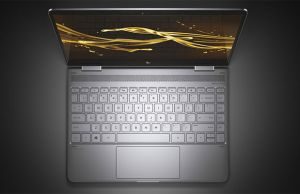
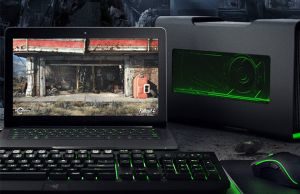


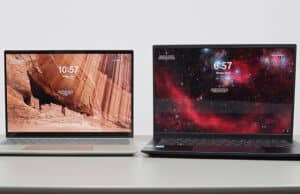
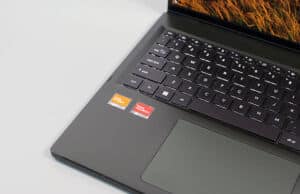
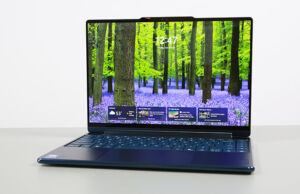
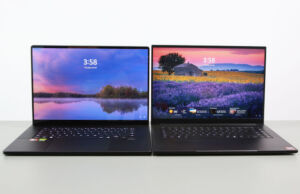

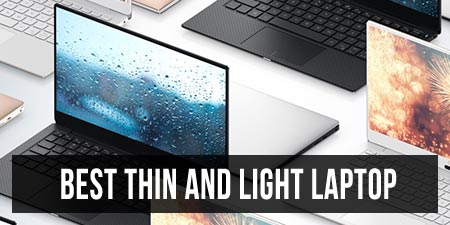
Yuri
August 14, 2025 at 12:10 pm
"every recent device with an N- CPU being with ChromeOS."
That's exactly right and strange at the same time.
No new Windows laptops out there with N-series cpus.
Jakub
August 15, 2025 at 12:39 pm
There simply aren't any fanless laptops available from the latest Intel series, N100, N200, etc., regardless of whether they run Windows or Chrome OS. They simply don't exist.
It's strange because these processors only have a TDP of 6W, yet they still get very hot.
Only the earlier quad-core N5000, 6000, 5100, etc. series were sometimes available fanless, but you still need to double-check everything because all these versions differ.
Even the dual-core Celeron N4500 from this series is suitable for basic tasks, while the quad-core N5000, 6000, 5100, etc., are comparable in performance to the entry-level i3 from a few years ago. You can do everything with them except, of course, gaming.
The truth is that Intel's latest series, the N100, N200, etc., run so hot that manufacturers are now including fans to keep things cool.
So buy the previous quad-core N5000, 6000, 5100, etc. series, or even the dual-core Celeron N4500, while they're still available. They're still easy to find.
The only model I know of that's 100% fanless from this series is the Asus E510 with a 15.6" screen. It has absolutely no vents like the MacBook Air, so dust can't get in at all.
They're still easy to find. Buy them while you can, because in the future, there probably won't be any fanless laptops.
Fanless Man
August 25, 2025 at 1:35 pm
I have purchased and used Asus' BR1204CTA with the N150 processor. After I installed LPDDR NVME storage, it is an excellent, good battery life, highly performant device on Windows 11. Windows 11 has also come a long way and is at the cusp of becoming better than Windows 10 in most meaningful ways.
The N150 processor is basically a 4 core, efficiency-core only version of intel's alder lake chips. It is EXCELLENT for daily tasks. It is "slow" to do "big" things but it does them well and without wasting power like Dell's XPS 2-in-1 alder lake chip the i7-1250U. However, you will feel that the i7-1250U is much snappier and faster. It has full cores after all. The Dell also has full x4 NVME storage, whereas the Asus only has x2 lanes available for the NVME. Even so, for random read and write performance, the NVME gives 40/50MB, which is excellent and transforms the device from a slow one to an acceptable one. The DRAM cache makes a difference.
If you're looking for a workstation, the Dell will be far superior. Its touchscreen and digitiser for the pen will worsen battery life, and so will its much stronger processor. So ironically it is far worse for portability than the ASUS BR1204CTA, which has no touchscreen, and no pen.
The ASUS has an excellent touchpad. As good as any surface touchpad I've used. It has a 50WH battery, excellent configurability from ASUS's software, and the speakers (with the right configuration choices, enabled through myASUS or Dirac's software tuner) are the best I have ever heard, or any device, including my desktop with 'proper' speakers which I have equalised to "perfection."
I am honestly amazed that I have received so much in a £350 laptop. The Dell cost 4x as much.
In other news, Microsoft has released a Snapdragon X Plus fanless tablet, the Surface Pro 12 Inch.
Peter
August 25, 2025 at 5:43 pm
Thanks for the interesting report. I was not aware of that option. I just compared it to the X13s, which seems to be better in all regards. So for a bit more money you probably can get a 2nd hand Lenovo instead. I got a new one for 550 Euro just two weeks ago. It was called "refurbished", but actually was new.
But surely a good suggestion as a new and affordable option for some basic use stuff. Thanks!
The Dell 2 in 1 I had bought a while back. But I had many problems, which were not clear if it is a hardware fault or whatever. A new installation was not fixing login problems and more. Also the missing kickstand is a bummer and makes that not very usable as a laptop replacement. Finally the glossy screen is — well glossy. IMO not a good choice for a laptop and it showed me that I must skip all laptops with glossy screens. This is a major point for me not to get a MacBook Air, besides the "wrong" OS (you can learn to live with and has some downsides and also good points). BTW, I could return the Dell luckily, because of the problems. But I am not sure if that is a general problem or just that unit. In general my experience with many Lenovo's over the years have been great. The experience with Dell was very mixed. HP was really bad — will never buy one again.
I have not received my X13s yet (I needed to order to another country, and can pick it up shortly). I will report here how the X13s works for me and if I can recommended it.
Yu
August 26, 2025 at 11:30 am
> Finally the glossy screen is — well glossy. IMO not a good choice for a laptop and it showed me that I must skip all laptops with glossy screens.
For reference, glossy doesn't have to mean much. Both matte and glossy screens reflect light, just differently. On a glossy screen you see a mirror image, on a matte screen you get an effectively very low contrast, because the reflected light becomes the effective brightness of a black pixel.
Glossy screens can be designed to reflect very *little* light and then easily outperform most matte screens. But I've only seen this done consistently with Apple devices, with any other manufacturer it is hit and miss.
RuThaN
September 29, 2025 at 4:47 pm
Some data filtering search with checkboxes would be even.
I mean im for example searching for this:
Fanless machine, with WWAN – LTE / 5G and not glossy screen.
Right now i have to copy machine names google them one by one, on lots of pages are info incomplete, or not all models, so any prefiltering option would be nice.. Its like filter in HW eshop or Desktop PC configurator.
Because its does not exist – i had to make Google sheet with all such machines to easy filter machine, because if hard to find machines with all required parameters, i even keep some machine with fans there, because not everything something what you looking for does exists, or it does its years old revision. For example machine which met all my requirement is Toshiba Portégé Z20t-C-11C – 2016 but its now obsolete too slow.
Also there are some fake fan emulators and some machine could be modded by users to fanless ones, hard but possible.
For glossy machine you can by some antireflex screen protector.
Other nice feature would be notify author of this list about some new fanless machine to add..
Pawel Koch
October 4, 2025 at 3:04 pm
"Also there are some fake fan emulators and some machine could be modded"
Nah, don't do it.
If there's a fan, it is there for a reason.
Don't remove it, don't emulate it & don't fake it.
Otherwise you will fry everything inside or there will be a throttling effect.'
Instead, just look for a fanless build. Fanless laptops are a dying breed, unfortunately.
Originally I was hoping that Qualcomm would present some fanless builds with their Snapdragon X, but to no avail.
It's strange because they can manufacture a tiny 12" Surface-pro-something tablet with a fanless Snapdragon x but much bigger laptops 15" etc. are just not available !
Even though it is clearly possible.
Go figure! :)
There's a new wave of Qualcomm's Snapdragon X2 coming , they presented it officially a few days ago.
Maybe some of them will be fanless this time, who knows.
RuThaN
October 6, 2025 at 3:09 pm
Please are modding some machine with fan to fanless from the start of home computer hardware production. Its not only desktops, but switches, consoles etc, not young or newbie in this area.
If CPU is low power exchange fan do heatsink and maybe small heatpipe could work too. Mobile CPUs are throttling anyway, when its not reported as throttling they are some short turbo with higher TDP, after they are running on stardart TDP and if temperature is too high they underclock / throttle.
There are even some machine with same CPU – with fan and fanless.
SnapDragon is arm cpu and x86 apps / old games run slowly on it, im not even sure if x86 32bit apps are still supported on such machines, i read something like that its only 64bit only or vice versa. There are also emulation bugs.
RuThaN
October 6, 2025 at 3:36 pm
Here is to my mostly fanless ultrabooks list parameters comparison :
https://docs.google.com/spreadsheets/d/13iorTQD0vz4i14mJH-rHH5e_GCIYLv2wY0rZ0VeoJYI/edit?usp=sharing
In list are some some machines with fans, because not always ideal machine of you dreams exists, is also great to see that you will have to sacrifice by choosing fanless option.
Im searching for fanless machine, ideally with anti-reflext touch screen, convertable with in build 4G/5G modem, there is not many of such machine, especially new ones:(
There are also some old handhelds / tablets in the list in own section – far right, i had not to update their list of recent year, i guess that iPads are still fanlless, but handhelds dont.
I finally managed to finish automatic synchronization script for cloning 1 Google sheets sub sheets (tab) with all formatting to another public document, because in original Google sheet other tabs which i did not wanted to share.
If you find some wrong data, or you are able to add some missing data, you can add comments on cells, or ask for editing rights through google Google docs interface, i will get notification in my email and i will grant rights as fast i can.
Edgar Ramirez
October 7, 2025 at 4:56 pm
Tablets aside, because I don't know nothing about them, same for laptops smaller than 15", because I'm used to 15" only for many, many years.
So… I've got 8 of them 15", different models, but all fanless Intel. I buy whenever I can because they are very rare and I kind of refresh my "stock" from time to time. All of them Intel CPUs.
I do research all the time and now… now it is a disaster.
Anyway…
These days, you can not, I repeat – you can NOT – buy anything new that is fanless 15". No way, they just don't make them anymore.
Used ones, some old models 2nd hand etc. – yes, but new models – there are NONE !
For the first time ever, I can't buy anything. Fans, fans, fans… Here, there, everywhere, hehe :)
Except MacBook Air, naturally, but that is a different story, completely.
RuThaN
October 9, 2025 at 2:40 pm
Edgar check my list – one post above, maybe you will find something, as i already wrote in other post if TDP is right and you have some skill, there are for like 3$ some fake fans rotation reporting dongle, yes they are for desktop machines, so you have to adjust fan cabling.. after you can please in where was fan some cooper heatsink it should wrong for some < 10W TDP machine.
Once you manage to boot to OS, even with throttling, you can use some some overclocking utility to change TDP and dowclock it. Intel itself has -Intel® Extreme Tuning Utility with TDP settings.
https://www.intel.com/content/www/us/en/download/17881/intel-extreme-tuning-utility-intel-xtu.html
Im usure if support all their CPU and some CPUs are supported only with older versions, because Intel is now mad and removing support for older HW and older OS from their drivers as mad.. That is not good strategy, as their product have hardtime to compete and this would be some additional value.
Lajos
October 15, 2025 at 8:49 pm
Someone here wrote:
"…The only model I know of that's 100% fanless is Asus E510 with a 15.6" screen…"
Yes indeed and I just bought one!
Dual-core Intel Celeron N4500 , 8 GB RAM , Full HD graphics and Windows 11.
I am honestly amazed because it runs great! What a pleasant surprise :)
Browsing with 15-20 tabs in Edge, no problem, text editing word, Excel. Power Point, MS Office and so on.
Netflix, VLC Player with x265 video codec, You Tube 1080 HD resolution – no problem.
Such things run very smooth.
What's more interesting, it does NOT get hot at all, just a little warm at best and sometimes simply cool.
Even though there are no vents, holes etc.
Somehow ASUS managed to achieve it, I'm guessing there must be at least one copper heat-pipe inside.
From what the salesman told me, there are plenty of those still on sale. People don't want them now because there's a new model of CPU replacing old one that I've bought, namely Intel N100 and N150 chips.
But beware, those are all 4-core and therefore NOT fanless.
Pawel Koch
October 18, 2025 at 11:11 pm
@RuThAn – that list of yours is nice. Ever heard of a fanless N100, 150, 200 etc. ?
Edgar Ramirez
October 22, 2025 at 7:03 pm
Hey people, just forget about it. Fanless laptops availability is just terrible right now. Actually, it is even worse… Because there's simply no availability for Windows users!
I've been in this for over 10 years and I know the market very well.
There are no 14-18" fanless models available as of October 2025.
There are only 13-15" MacBook Airs.
So… there's simply no choice for Windows users.
Jakub
October 25, 2025 at 2:40 pm
Yes, that's exactly right.
Unfortunately,
Laptop manufacturers are playing it safe and are using fans in each and every one of 14" and 15" Windows models, which are the most popular among the public.
Edgar Ramirez
November 19, 2025 at 2:58 pm
Hello everybody !
We've been waiting for a long time and…
The first passively cooled laptop with an OLED screen is here.
Lenovo Chromebook Plus 14 – more and more positive reviews are coming in.